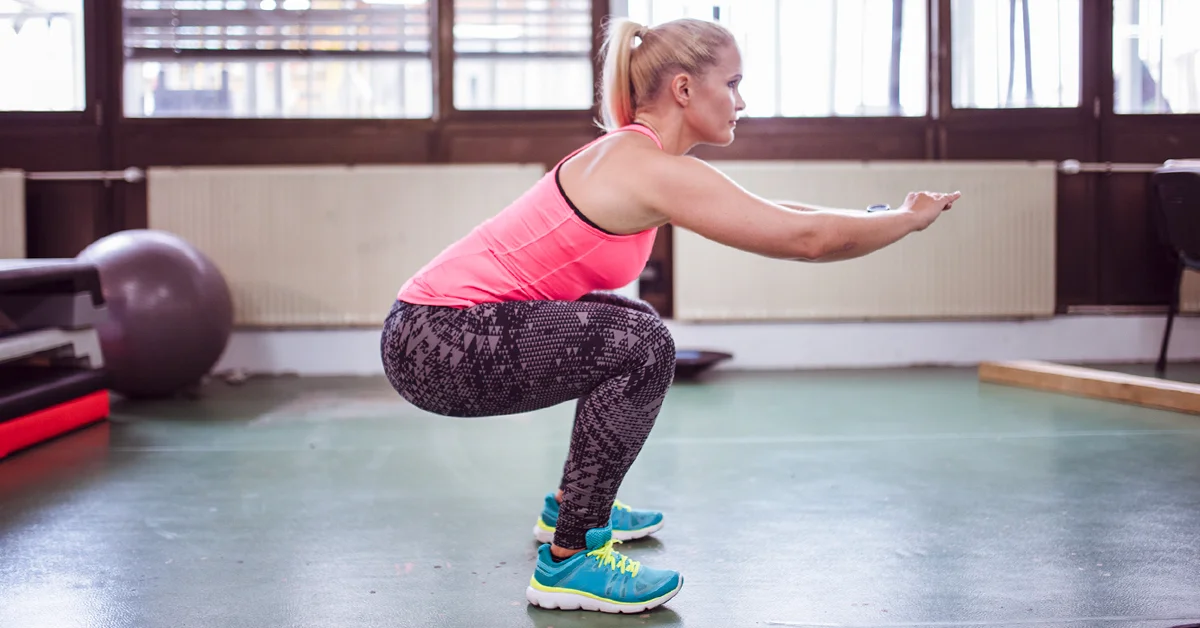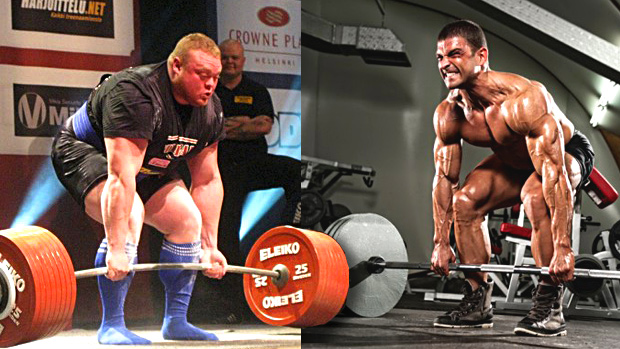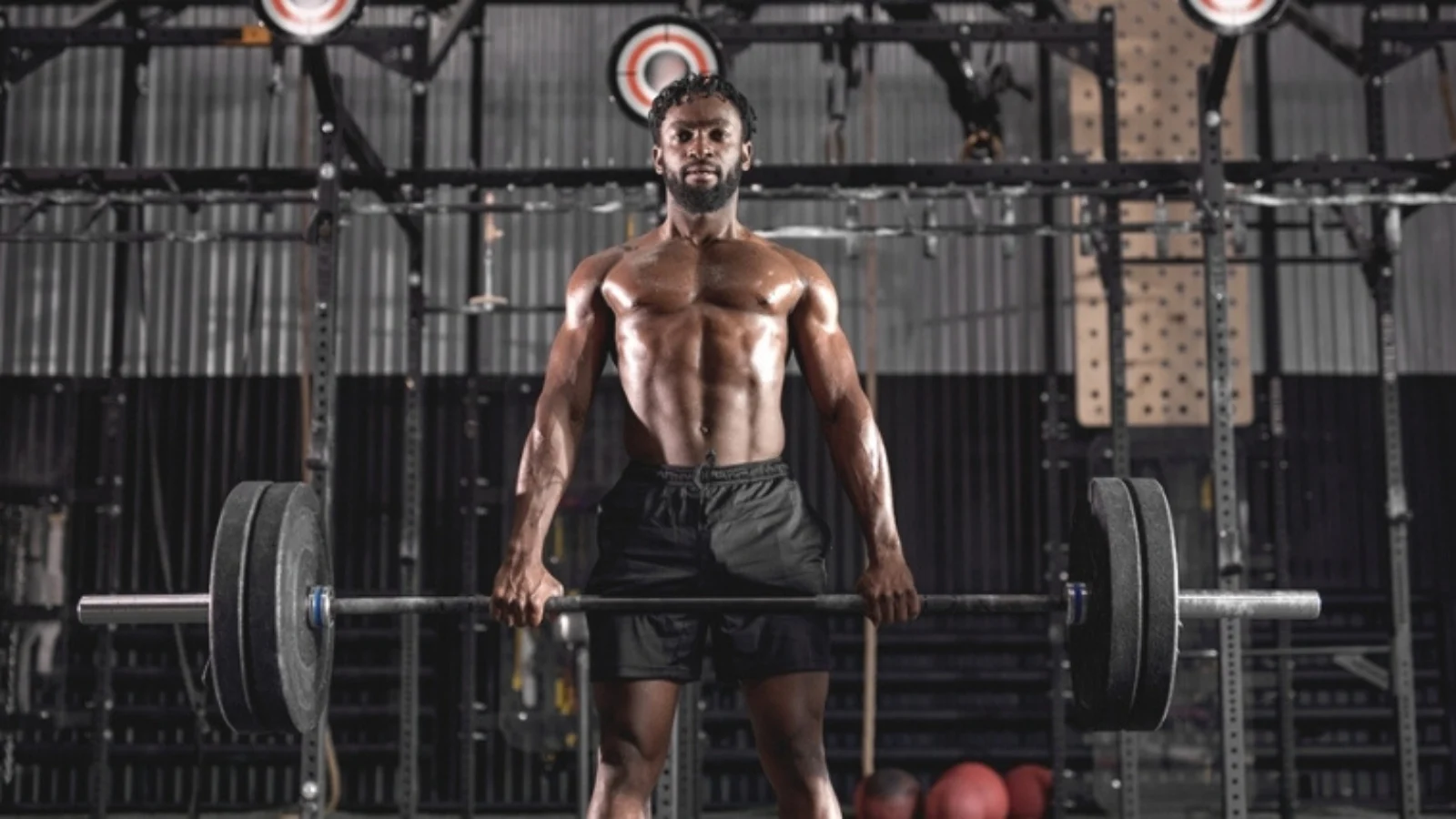Introduction to Floor Press Technique in Powerlifting
The Floor Press is a widely adopted weightlifting strategy amongst powerlifters. It enables biomechanical advantages and can assist in increasing strength capacity. In this technique, the individual restricts their range of motion by bringing the weights down till their elbows touch the ground.
The 'Introduction to Floor Press Technique in Powerlifting' discusses how this novel maneuver has changed the game for modern-day powerlifters.
The Floor Press facilitates better activation of triceps while also reducing shoulder strain, making it a preferred choice among athletes. Employing this technique early on during training can act as an excellent way to improve strength, further allowing progression towards other advanced lifts.
Additionally, close-grip floor presses target different muscle groups compared to traditional bench presses and can bring new dimensions to your workout regime.
This method has been around since 1901 when Frederick Winters invented it for military personnel who were too tall for regular push-ups. The original lift was done with dumbbells but has evolved into using barbells over time. Now, it is considered one of the most immersive movements out there that allow lifters to generate max force from their chest while minimizing shoulder stress.
Get down and give me twenty...floor press reps, that is. Let's learn the basics.
The Basics of Floor Press Technique
To perfect your floor press technique in powerlifting, you need to understand the basics. In order to achieve a great floor press, you need to have a proper set up and the right equipment. Additionally, executing the right form is crucial to ensure effective floor press repetition. This section delves deeper into the basics of floor press technique and introduces you to the two sub-sections: set up and equipment for the floor press, and floor press form and execution.
Set up and Equipment for the Floor Press
Floor Press Preparation and Equipment
To perform the floor press, preparation and proper equipment are essential. Here are some important points to consider before beginning the exercise:
- Ensure that the bench or mat is firm and stable.
- Use a barbell with an appropriate weight that you can comfortably lift.
- Lie down on your back with your feet firmly planted on the ground.
- Maintain a strong core by engaging your abs throughout the exercise.
- Make sure to grip the bar evenly while keeping your elbows close to your sides.
For further guidance, professional trainers recommend wearing shoes that provide a stable base for overall balance.
It's important to note that beginners should take caution when using heavier weights or trying out this technique for the first time. The simple yet effective floor press can provide excellent upper body strength training even without traditional gym benches, but it's always better to seek professional help if you're unsure about any aspect of preparation or execution.
According to
Shape Magazine, incorporating variations of floor pressing can help reduce shoulder stress since it never requires users' shoulders to go below parallel with their chest as in regular bench presses. Get down and give me a floor press, but make sure you're executing it with proper form to avoid a barbell-induced facial.
Floor Press Form and Execution
Floor Press Technique - Understanding and Application
Mastering the Floor Press technique is essential for optimal upper body strength training. Here, we will discuss how to execute it with proper form.
- Lie on your back with your shoulders close to the ground, legs extended.
- Hold the barbell with a grip slightly wider than shoulder-width.
- On an inhale, lower the bar to your chest keeping your elbows at a 45-degree angle.
- Pause briefly at the bottom of the movement before pressing back up on an exhale.
- Repeat for desired reps.
To achieve maximum benefits from this exercise, one should maintain tightness in their core muscles throughout the movement.
When using the floor press technique, be careful not to overextend your elbows beyond shoulder level while pressing up; doing so can lead to undue stress on your shoulders and arms.
Researchers from
La Plataforma de Investigación en Fisiología del Ejercicio found that those who included floor presses in their exercise regimen experienced greater bench press gains than those who didn't.
Get a lift from Floor Press - the technique that'll have you benching like a boss in no time!
Benefits of Floor Press Technique in Powerlifting
To develop triceps and lockout strength, and overcome weakness in the upper body, use floor press technique in powerlifting. This technique has immense benefits for powerlifters and can improve your performance. In this section, we will cover the advantages of floor press technique in powerlifting by exploring its two sub-sections: developing triceps and lockout strength, and overcoming weakness in upper body.
Developing Triceps and Lockout Strength
The floor press technique is beneficial for enhancing the triceps and improving lockout strength in powerlifting. This method involves bench pressing while lying on the floor with a reduced range of motion, making it an ideal exercise to focus on certain muscle groups.
To develop triceps and lockout strength using the floor press technique, one can follow these
5 steps:
- Set up equipment in adherence to safety protocols.
- Lie on the floor beneath the barbell with elbows tucked in towards the side.
- Push the barbell upward until arms are completely extended before gradually lowering it to prevent contact with the chest or torso.
- Pause momentarily during ascent, maintaining tension on triceps and remaining aware of proper form.
- Repeat this cycle for desired reps before reracking equipment safely.
It is important to remember that certain variables can affect performance such as grip width and use of additional resistance.
Some unique details regarding this technique include
increased focus on tricep development due to limited range of motion, reduced risk of injury due to eliminated range of motion involving shoulder blades and
reduced stress on shoulders allowing greater emphasis on upper chest involvement by utilizing more incline variations.
One powerlifter attributed their competition win partly to incorporating the floor press into their routine, having noticed significant improvement in their benching ability through enhanced tricep activation.
By following proper protocol, gradually increasing weight load, staying consistent with workout regimen, and adjusting volume/reps based on personal goals, anyone interested in enhancing their tricep development and overall benching capability should consider integrating floor presses into their routine. Why bench press when you can floor press? It's like lifting weights while taking a nap.
Overcoming Weakness in Upper Body
The technique of floor press is a proficient method to build upper body strength and surpass weakness. This technique engages the chest, triceps and shoulders, resulting in improved bench press performance.
A 3-step guide to surpassing weakness in upper body includes:
- Incorporating floor press into your workout routine, as it optimizes pressing power while minimizing shoulder stress.
- Lifting heavier weights on the floor press as compared to traditional bench press, improving lockout strength.
- Utilizing variations such as close-grip floor presses and accommodating resistance techniques with bands or chains.
Moreover, using this technique serves as an injury prevention measure by targeting muscle groups that are weaker than others.
To ensure progress in powerlifting, it is crucial to incorporate various exercises into your training regime regularly. Don't miss out on the benefits provided by the floor press technique- try incorporating it into your lifting program today!
Who needs a bench when you can floor it? Incorporating the floor press technique in powerlifting training for maximum gains.
Incorporating Floor Press Technique in Powerlifting Training
To incorporate the floor press technique in your powerlifting training with maximum efficiency, explore the variation and focus on the right frequency and repetitions. Achieving optimum results requires careful consideration of these sub-sections. The variation of floor press technique and the frequency and repetitions used can impact powerlifting training results.
Variation of Floor Press Technique
For a comprehensive training regime in powerlifting, it is essential to incorporate variations of the floor press technique. The technique has multiple variations, each with its advantages and disadvantages. These variations aim to target different muscle groups for increased strength and muscle gains.
The following table provides details of a few variations of the floor press technique:
| Floor Press Variation |
Description |
Muscle Group Targeted |
| Paused Floor Press |
Hold the bar at chest level for two seconds before pressing it up |
Chest, Triceps, Shoulders |
| Dumbbell Floor Press |
Use dumbbells instead of barbell for pressing movements on the floor |
Chest, Triceps |
| Close Grip Floor Press |
Narrow grip on the barbell for triceps engagement rather than pectorals |
Triceps |
| Incline/Decline Floor Press |
Perform presses while lying on an inclined or declined bench |
Upper or lower chest |
It is crucial to choose the variation that specifically caters to your individual goals and weaknesses. For instance, the close grip floor press can be beneficial for individuals trying to build their triceps while protecting shoulder joints.
Pro tip: Incorporating multiple floor press variations in your powerlifting routine will help achieve overall strength gains by engaging various muscle groups and avoiding plateaus.
Why do one rep when you can do ten? Unless it's tequila shots, then one is plenty.
Frequency and Repetitions for Optimum Results
Powerlifters can achieve optimum results by understanding the ideal frequency and repetitions required for incorporating floor press technique in their training.
- Powerlifters should perform the floor press at least once a week to ensure consistency and familiarity with the technique.
- They should aim for 3-5 sets of 3-8 repetitions per session to develop proper muscle activation and strength gains.
- Incorporating variations such as board presses or close-grip floor presses can enhance progress and prevent plateauing.
- Gradually increasing weight while maintaining proper form is key to achieving maximum benefits from this exercise.
It is crucial for powerlifters to have a balanced training program that includes other compound movements like bench press, overhead press, squats, and deadlifts. Performing floor presses too frequently can lead to overuse injuries or neglect of other muscle groups.
Research studies have shown that performing the floor press can increase triceps and chest muscle activation compared to traditional bench press exercises (
1).
(
1) "Muscle activity during three sets to failure with different loads in bench press." European Journal of Sport Science, vol. 14, no. 2, 2014, pp. 200-206.
Floor press vs bench press: it's like choosing between a foot massage and a full-body massage, except one makes you stronger and the other just feels really nice.
Comparison of Floor Press Technique with Bench Press Technique
To compare the floor press technique with bench press technique for powerlifting, explore the differences in form and muscle activation, and examine the pros and cons of each technique. The floor press technique can offer unique benefits that the bench press technique may not, while also presenting some potential limitations.
Differences in Form and Muscle Activation
Exploring the Distinctive Techniques and Muscle Activity between Floor and Bench Presses
To maximize muscle engagement, it is crucial to choose the right exercise form. Comparing floor press with bench press, we can identify contrasting muscle activation patterns.
|
Floor Press |
Bench Press |
| Range of Motion |
Reduces Range of Motion |
Increases Range of Motion |
| Muscle Activation |
Higher Triceps and Pectorals Activation; Lower Anterior Deltoid Activation than Bench Press |
Higher Anterior Deltoids, Upper Fibers of Pectoralis Major, and Biceps Brachii Activation than Floor Press; Lesser Triceps Activation |
| Benefits |
Promotes Lockout Strength, Reduces Shoulder Strain for People with Impinged Shoulders or Elbow Issues. |
Full-Body Workout that Engages Various Muscles; Helps Target Imbalances in Muscles. |
A floor press limits range of motion and
increases tricep and pectoral activation while reducing anterior deltoid activity compared to bench press. On the other hand, a bench press amplifies overall stimulus for the chest alongside using upper fibers of the pectoralis major. Depending on individual fitness goals and body movements, training specificity dictates which technique to pick.
Pro Tip: Incorporating both techniques in your workout regimen can help you improve your overall muscle strength while targeting unique imbalances related to each technique. Pros and cons? More like bench press and floor press both have their ups and downs...literally.
Pros and Cons of Floor Press Technique vs Bench Press Technique
Starting strong, exploring the advantages and drawbacks of utilizing
Floor Press Technique or
Bench Press Technique is an essential aspect of achieving optimal results. A comprehensive evaluation of these two techniques can aid in identifying which technique surpasses the other in specific aspects.
An articulated table comparing the Pros and Cons of both techniques is illustrated below:
|
Floor Press Technique |
Bench Press Technique |
| Pros |
- Reduced spinal pressure
- Greater triceps activation
- Increases lockout power
|
- Mimics more precise functional (Horizontal Push) movement growth
|
| Cons |
- Restricted range of motion by shoulder blades
|
- Might increase chances of shoulder injury
|
It's also important to note that often, clients select a particular technique that suits their personal preferences. Additionally, complimentary exercises must be performed to maximize desired outcomes.
Incorporating specific exercises to supplement muscle symmetry imbalances caused by emphasizing one technique over another will ensure maximum results without increasing the possibility of developing injuries.
According to research published in
Sports Health Journal, "The bench press technique triggered greater pectoralis major recruitment than push-ups."
It's important to choose a procedure based on individual goals, abilities, and limitations, rather than just following someone else's routine. With an adequate comprehension of both methods' benefits and disadvantages, it's easier to form a personalized workout program.
Say goodbye to bench envy and hello to floor domination with the power of the floor press technique.
Conclusion and Key Takeaways on Floor Press Technique in Powerlifting
Floor Press Technique: Understanding Its Importance in Powerlifting
The Floor Press technique is an essential part of any powerlifter's training regimen. By focusing on maximizing tricep and chest strength, the Floor Press promotes overall upper body and core stability during bench press maneuvers. This article will provide you with a detailed guide on the Floor Press technique, along with key takeaways that you can apply to your powerlifting program.
To begin with, it's crucial to understand the correct execution of the Floor Press technique. Using a barbell or dumbbells, start by lying down on the floor with your back straight and your feet flat on the ground. Place your hands shoulder-width apart on the bar/dumbbell and engage your triceps to lift it off from the floor. Lower the weight slowly while keeping
your elbows close to your torso until your arms are at a 90-degree angle. Finally, push up explosively towards the starting position.
It’s important to note that incorporating Floor Presses in a structured powerlifting program can lead to significant improvement in results. The benefits of this practical exercise go beyond just strengthening powerlifters' triceps and chest; they also help build stability and control throughout their entire bodies. In fact, many experienced coaches use them for warmups or accessory work leading up to heavy bench press training days.
Incorporating Floor Presses into your regimen may require some modifications based on individual factors such as muscle weaknesses or injuries but working through them correctly can provide remarkable improvements to overall performance.
Pro Tip: Start small when introducing new movements in such high-intensity training schemes as Powerlifting. Start with relatively lighter weights than what is used in Bench presses initially so that there is time for proper form development as well as muscle engagement before gradually increasing weight over time.




